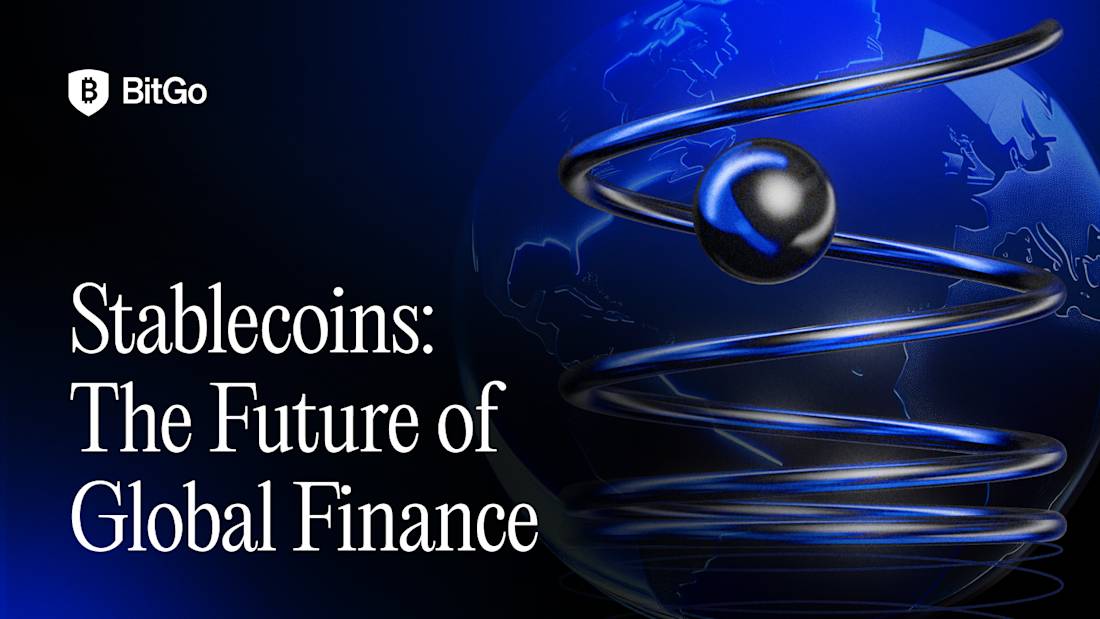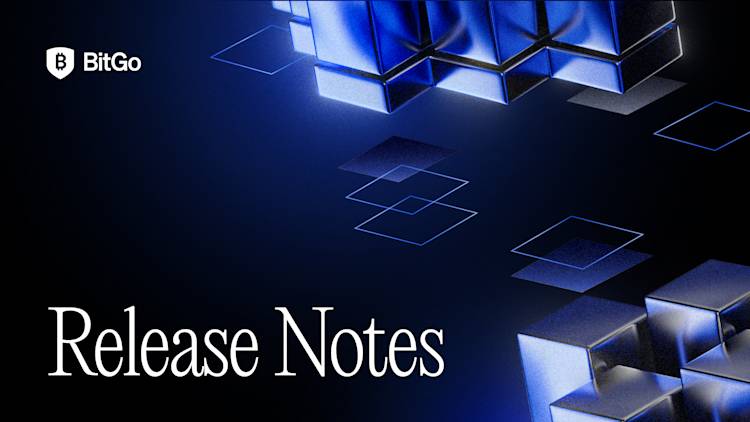April is Financial Literacy Month—a great time to focus on building confidence and knowledge about financial tools. Among them, stablecoins stand out as one of the most transformative.
Though they’ve been quietly used for years, stablecoins are now gaining momentum as an easy way to gain access to US Dollars, and as payment rails. President Trump has recently called for regulation and the STABLE and GENIUS bills are moving through Congress.
These digital assets, typically redeemable 1:1 with U.S. dollars, are designed to maintain a steady value—and they’re quickly moving from niche to mainstream. As stablecoins move closer to becoming a household product, it’s important to understand what they are and how they work.
The History of Stablecoins
Stablecoins are a relatively recent innovation, born from the need for stability in a sometimes volatile market. The first stablecoin, BitUSD, was introduced in 2014 as a token pegged to the U.S. dollar. Soon after, Tether launched and proved the strong demand for digital dollars on crypto exchanges. Traders quickly adopted Tether as a way to move funds without relying on banks, and as a place to hold their capital when markets turned sour. In April 2025, Tether now has a market capitalization of $144B representing over half of the total stablecoin sector.
In the following years, the stablecoin landscape expanded. New stablecoins entered the market with various approaches to maintaining their pegs. Some are fully backed by cash reserves and run by regulated companies while others use cryptocurrency collateral and algorithms to maintain their value.

What began as a niche idea has become a cornerstone of the crypto economy. The stablecoin market cap was a mere ~$60B in early 2021, but today has risen to a $233B. Suddenly capital markets are paying attention to tokenized dollars.
Stability, Liquidity, and Accessibility
Stability is the defining feature of a stablecoin. Unlike bitcoin or other cryptocurrencies, a stablecoin is typically pegged 1:1 to a fiat currency. This steady value gives users confidence to hold and transact with stablecoins without worrying about wild price swings.
Stablecoins also add liquidity to cryptocurrency markets. On exchanges, they act as a common trading pair because their price is predictable. Investors can quickly convert a crypto asset into a stablecoin to preserve value during market swings, without exiting the crypto ecosystem. And since stablecoins trade 24/7 globally, they keep funds moving fast and efficiently.
Stablecoins also improve accessibility in global finance. They make the value of a dollar available to anyone with an internet connection, even those without traditional banking. People in countries with unstable currencies or high inflation use stablecoins to store value in a more reliable form. Sending money internationally is faster and cheaper with stablecoins, offering a low-cost alternative to traditional remittances. This makes stablecoins a powerful tool for financial inclusion on a global scale.
Use Cases for Stablecoins
Stablecoins have become indispensable in several areas of digital finance. Key use cases include:
-
Trading and Hedging: Traders use stablecoins as a safe harbor during volatile markets. Rather than cashing out to a bank, they can quickly convert a cryptocurrency into a stablecoin to lock in its dollar value. This strategy allows holders to hedge against price swings while staying in the crypto market.
-
Remittances and Payments: Sending stablecoins across borders is typically faster and cheaper than traditional remittance methods. Someone can send a stablecoin to a family member overseas and the recipient receives it in minutes and can convert it to their local currency. This approach reduces fees and wait times, expanding access to affordable financial services.
-
Decentralized Finance (DeFi): Stablecoins are a foundation of the DeFi ecosystem. On lending platforms, users deposit stablecoins to earn interest or use them as collateral for loans. On decentralized exchanges, stablecoin trading pairs enable efficient swaps with minimal volatility. Stablecoins provide a stable unit of account that underpins lending, borrowing, and other DeFi transactions.
Safeguarding Stablecoin Assets: The Importance of Proper Custody
As stablecoin use grows, proper custody – secure storage and management of these assets – becomes critical. Unlike keeping money in a bank, holding stablecoins requires protecting private cryptographic keys, and losing those keys means losing the funds. Robust custody solutions are essential to guard against theft or loss.
Institutional holders of stablecoins usually rely on qualified custodians for security. Custodians provide multi-signature wallets (requiring multiple approvals for transactions), offline cold storage of keys, and other advanced safeguards. For example, BitGo – a regulated digital asset custodian – helps institutions secure their stablecoin reserves with these measures. With a trusted custodian, organizations can confidently hold and use large amounts of stablecoins knowing their assets are safe. Secure custody not only protects the assets but also gives greater confidence to participate in the digital asset ecosystem.
Where Do Stablecoins Come From?
The creation and maintenance of stablecoins require robust infrastructure to ensure their stability, compliance, and security. BitGo's Stablecoin-as-a-Service provides that infrastructure, enabling institutions to launch and manage their own stablecoins efficiently. This service includes reserve management, regulatory compliance, and smart contract development, ensuring that each stablecoin is fully backed, transparent, and integrated into the broader financial ecosystem.
BitGo’s partnership with World Liberty Financial led to the launch of USD1, a stablecoin fully backed by U.S. dollar reserves—demonstrating the real-world utility of this infrastructure. It represents a foundational step in the broader adoption of compliant, asset-backed digital currencies.
Empowerment Through Financial Literacy
Stablecoins serve as a vital bridge between traditional finance and the world of digital assets. By combining the familiar stability of fiat currencies with the speed, transparency, and efficiency of blockchain technology, stablecoins offer a powerful tool for navigating the new digital economy. This unique positioning makes them essential to understand—not just for crypto enthusiasts, but for anyone looking to be financially informed in today’s financial landscape.
Whether it's navigating global market volatility or safeguarding purchasing power in regions facing economic instability, the need for a reliable, accessible store of value is universal. While innovative assets like bitcoin capture headlines, stablecoins quietly play a foundational role in digital finance—offering a dependable alternative when certainty is needed most.
Disclaimers
Stablecoins are designed to maintain a stable value, typically pegged to a fiat currency such as the U.S. dollar. However, they are not risk-free. The ability of a stablecoin to maintain its peg depends on the underlying collateral, reserve management practices, and the stability of the issuer. Some stablecoins have historically lost their peg due to market volatility, lack of transparency, or operational failures. Users should conduct their own due diligence and understand the potential risks before using or holding stablecoins. This blog is for informational purposes only and does not constitute financial or investment advice.
Table of Contents
The latest
All NewsAbout BitGo
BitGo is the digital asset infrastructure company, delivering custody, wallets, staking, trading, financing, and settlement services from regulated cold storage. Since our founding in 2013, we have been focused on accelerating the transition of the financial system to a digital asset economy. With a global presence and multiple regulated entities, BitGo serves thousands of institutions, including many of the industry's top brands, exchanges, and platforms, and millions of retail investors worldwide. For more information, visit www.bitgo.com.
©2025 BitGo, Inc. (collectively with its parent, affiliates, and subsidiaries, “BitGo”). All rights reserved. BitGo Bank & Trust, National Association (“BitGo Bank & Trust”) is a national trust bank chartered and regulated by the Office of the Comptroller of the Currency (OCC). BitGo Bank & Trust is a wholly-owned subsidiary of BitGo Holdings, Inc., a Delaware corporation headquartered in Palo Alto, California. Other BitGo entities include BitGo, Inc. and BitGo Prime LLC, each of which is a separately operated affiliate of BitGo Bank & Trust.
BitGo does not offer legal, tax, accounting, or investment advisory services. The information contained herein is for informational and marketing purposes only and should not be construed as legal, tax, or investment advice. You should consult with your own legal, tax, and investment advisor for questions about your specific circumstances.
Digital assets are subject to a high degree of risk, including the possible loss of the entire principal amount invested. Past performance and illustrative examples do not guarantee future results. The value of digital assets can fluctuate significantly and may become worthless. No BitGo communication is intended to imply that any digital asset services are low-risk or risk-free. BitGo is not a registered broker-dealer and is not a member of the Securities Investor Protection Corporation (“SIPC”) or the Financial Industry Regulatory Authority (“FINRA”). Digital assets held in custody are not guaranteed by BitGo and are not subject to the insurance protections of the Federal Deposit Insurance Corporation (“FDIC”) or SIPC. Custody and other digital asset services are subject to eligibility, jurisdictional, and regulatory restrictions. Availability of specific products and services may vary by location and entity.
BitGo endeavors to provide accurate information on its websites, press releases, blogs, and presentations, but cannot guarantee all content is correct, completed, or updated. Content is subject to change without notice. BitGo disclaims any obligation to update or supplement such information except as required by applicable law or regulation.
BitGo makes no representation that the information contained herein is appropriate for use in any jurisdiction where its distribution or use would be contrary to law or regulation or would subject BitGo or any of its affiliates to any registration or licensing requirements in such jurisdiction. Persons who access this information are responsible for complying with all applicable laws and regulations.




